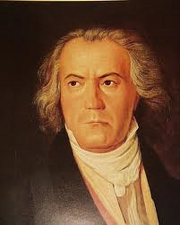
Ludwig Van Plate
Write the first paragraph of your page here.
Pleiotropy:[]
Pleiotropy: refers to the phenomenon when one gene or gene complex influences multiple unrelated phenotypes.
History: The term entered the literature over 100 years ago and is attributed to the geneticist Ludwig Van Plate (1910). As early as 1866 Mendell noted the traits of a brown seed coat, violet flowers, and axial spots or a white seed coat, white flowers, and lack of spots always appeared together in his Pisium 3 group of peas. He believed that they were under the control of a single factor (Stearns 2010).
Speciation and Medical Applications[]
Speciation: This phenomenon was illustrated by Jiggins et al (2001) who carried out a series of elegant butterfly experiments in which they attempted to interbreed members of H.melpomene and H.cyndo families indigenous to both Panama and French Guiana. . They found that each species, not surprisingly mated with its own species from the same geographic location. However they were more likely to mate with their sister species from another geographic area than to mate with their sister species from their own geographic area. The gene coding for wing color pattern on the Heliconius species provided protection through mimicry but also acted as a signal for mating. Pleiotropy increased the selection pressure for mimicry genes which create pre-zygotic barriers to mate choice, and as such was hypothesized to lead to the rapid spread of the gene through the population, accounting for preponderance of divergent mimics within the Heliconius species (Jiggins et al 2001).
Medical application: Pleiotropy is responsible for the effects of the gene mutation causing Pheylketoneuria (PKU). Phenylketonuria is caused when a mutation in a single gene prevents the enzyme phenylalanine hydroxylase from converting phenylalanine to tyrosine. The accumulation of toxic phenylalanine cause several mutations in unrelated organs. For example, PKU can cause mental retardation, and loss of hair and skin pigmentation.
Antagonistic Pleiotropy has positive and negative traits. For example the gene responsible for the development of testosterone in adolescent males, is responsible for prostate cancer in adult men.
The environment can influence whether or not pleiotropy is antagonistic. For example, if an individual with the PKU mutation does not have a diet with phenylalanine the individual will not develop PKU, (Natural Standard Bottom Line Monograph 2013).
References:
Jiggins,D.C., Russell, N.E., Coe, R.L., Mallet, J. (2001). Reproductive isolation caused by color pattern mimicry. Nature 411: 302-305.
Stearns, W.F. (2010). One Hundred Years of Pleiotropy: A Retrospective
Genetics 186(3): 767-773.
Natural Standard Bottom Line Monograph (2013). Pleiotropy. Retrieved November 30th from: http://www.naturalstandard.com/index-abstract.asp?create-abstract=genomic-pleiotropy.asp&title=Pleiotropy.